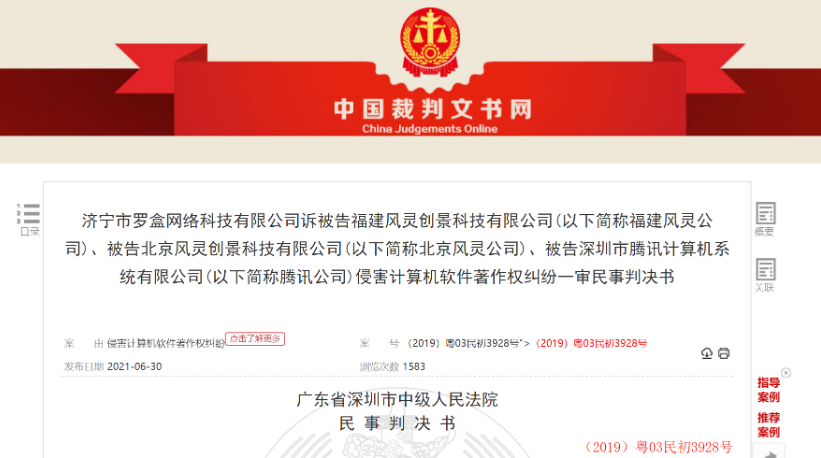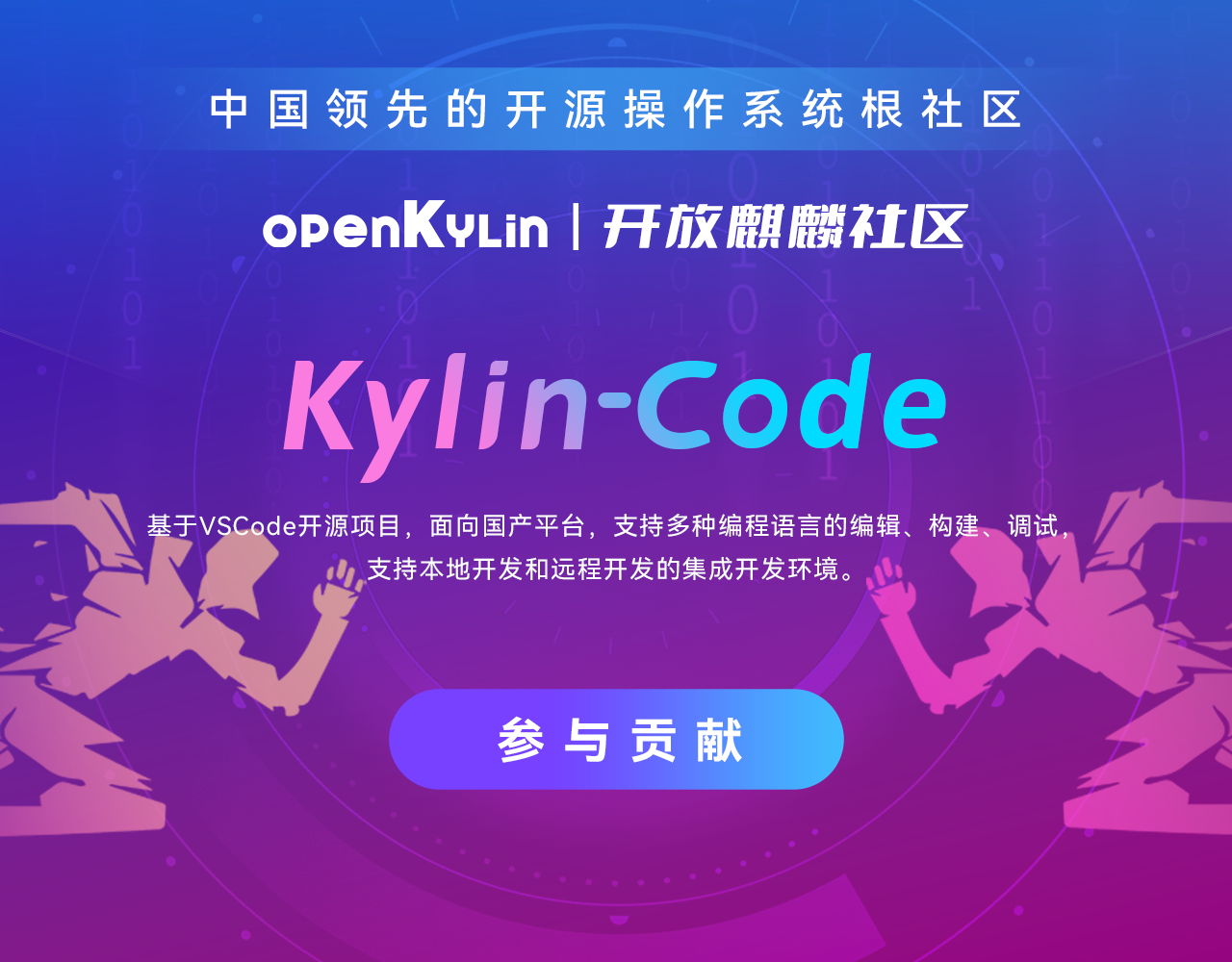Recently, a judgment document on GPL copyright dispute case was publicized. The verdict of the first instance shows that, GPL3.0 agreement It is a civil legal act, have yes contract nature It can be identified as the copyright agreement concluded between the licensor and the user, which falls within the scope of adjustment of China's Contract Law. The defendant company in the first instance decided two infringements Compensate the plaintiff's company for economic losses and reasonable expenses for rights protection totaling 500000 yuan, and stop the infringement.
This case can be said to be The first case in China to clarify the legal effect of GPL3.0 agreement 。 The judgment shows that clarifying the legal liability for infringement of open source software license can, on the one hand, stop infringement in a timely manner and prevent others from improper use of open source software; On the other hand, it can effectively protect the interests of licensors, keep them motivated to continue to create, and promote source code sharing and knowledge dissemination.
However, it is worth noting that the fact of infringement of the defendant in this case is true because the violation of the GPL3.0 agreement led to the automatic termination of the GPL3.0 agreement, and the defendant lost the source code authorization protection under the GPL3.0 agreement, thus constituting infringement.
The tort liability for breach of GPL3.0 agreement in the judgment is clear as follows:
Liability for infringement of GPL3.0 agreement.
In order to protect the exclusive rights of the obligee, the Copyright Law only stipulates that non obligees can use the work within the scope of "fair use". Rights such as reproduction, modification, distribution, etc. belong exclusively to the obligee. Anyone who carries out these acts without permission will constitute infringement.
According to Article 8 "Termination of Authorization" of the GPL3.0 Agreement, the licensor permits the user to exercise certain rights on the premise of complying with the provisions of the license, but the user must assume corresponding obligations. If a user copies, modifies or disseminates the protected work in violation of the conditions of use of the GPL3.0 agreement, the authorization obtained through the GPL3.0 agreement will automatically terminate.
In this regard, Article 158 of China's General Principles of Civil Law stipulates that "a civil juristic act may be subject to conditions... a civil juristic act subject to conditions for dissolution shall become invalid when the conditions are met".
According to the characteristics of open source software, the use conditions specified in the GPL3.0 agreement (such as open source code, labeling copyright information, modification information, etc.) are the preconditions for the licensor to allow users to use freely, that is, the release conditions attached to the agreement. Once the user violates the preconditions for use, the GPL3.0 agreement will be automatically terminated between the licensor and the user, and the user's license obtained based on the agreement will be immediately terminated. The user's copying, modification, publishing and other acts constitute infringement due to the loss of the source of rights.

The relevant contents of this case are sorted out from the first instance verdict.
Case overview
Plaintiff: Jining Luohe Network Technology Co., Ltd
Defendant: Fujian Fengling Chuangjing Technology Co., Ltd. (hereinafter referred to as Fujian Fengling Company)
Defendant: Beijing Fengling Chuangjing Technology Co., Ltd. (hereinafter referred to as Beijing Fengling Company)
(Fujian Fengling Company is a wholly-owned subsidiary of the defendant Beijing Fengling Company)
Defendant: Shenzhen Tencent Computer System Co., Ltd. (hereinafter referred to as Tencent)
The plaintiff Jining Luohe Network Technology Co., Ltd. independently developed "Luohe"( VirtualApp )Plug in framework virtual engine system V1.0 (VirtualApp V1.0 for short). VirtualApp introduced the open source agreement from the version on July 8, 2016. It was originally the LGPL3.0 agreement, and was replaced by the GPL3.0 agreement on August 12, 2016.
On October 29, 2017, the plaintiff company deleted the expression "applicable to GPL3.0 agreement" in the subsequent open source version of VirtualApp.
On November 8, 2017, the plaintiff company obtained the computer software copyright registration certificate for VirtualApp V1.0, and legally enjoyed all the rights of VirtualApp V1.0 software copyright.
The updated CHINESE.md file (corresponding to Git code 8e6d9cd925af55b53a7e93046c469dd69676c38b It was officially incorporated in August 2017. When you need to use VirtualApp for commercial purposes, please be sure to contact QQ1 ****** to purchase commercial authorization... The source code of VirtualApp will stop updating on December 31, 2017 ".

In September 2018, the plaintiff investigated and found that the software named "Dessert Desktop" used the code of VirtualApp V1.0, and analyzed and compared the two software source codes. Of the 421 comparable codes between the two, 308 codes had substantial similarity, 27 codes had high similarity, and 78 codes had general similarity. Therefore, the composition of the sued infringing software is substantially similar to that of the software involved.
The plaintiff brought a lawsuit to the court, and the court made it clear that the petition was the decree as follows:
1. The defendant Fujian Fengling Company and the defendant Beijing Fengling Company immediately stopped infringing the copyright of the plaintiff's computer software, that is, immediately stopped downloading, installing and operating all versions of the "dim sum desktop" software through the Internet;
2. The defendant Fujian Fengling Company and the defendant Beijing Fengling Company compensated the plaintiff with 20 million yuan of economic losses;
3. The Defendant Fujian Fengling Company and the Defendant Beijing Fengling Company compensate the Plaintiff for the reasonable expenses of 500000 yuan paid to stop the infringement;
4. The defendant Fujian Fengling Company and the defendant Beijing Fengling Company shall bear the litigation costs of this case.
The evidence shows that the defendant Fujian Fengling Company is the copyright owner of the accused infringing software "dim sum desktop". The defendant Beijing Fengling Company was also identified as the developer of the "dim sum desktop" on the relevant Internet platform, and was registered as the copyright owner of the "dim sum desktop" software. In addition, the "Dim Sum Desktop Official Website" and "App Treasure" websites, which provide services for downloading, installing and operating the sued infringing software, were operated by the defendant Fujian Fengling Company and Tencent Company respectively.
After the case was filed, it was found through investigation that the respondent's "dim sum desktop" app (V6.5.8) used the plaintiff's VirtualApp released using the GPL3.0 protocol, and the defendant also confirmed this.
Court opinion
The court held that the case was a dispute over the infringement of computer software copyright, involving issues related to open source software. According to the defense opinions and evidence adduction of both parties, the focus of dispute in this case is divided into four aspects. The court has given a clear view on the focus issue.
(This part is a selection of the opinions of the court. For details, see the original text of the judgment.)
Focus 1: the legal effect of GPL3.0 agreement.
The court clarified that the GPL3.0 agreement is contractual in nature and can be identified as a copyright agreement between the licensor and the user, It falls within the scope of adjustment of China's Contract Law 。
With regard to the tort liability for violating the GPL3.0 agreement, it is clear that if the user copies, modifies or spreads the protected work in violation of the conditions of use of the GPL3.0 agreement, the authorization obtained through the GPL3.0 agreement will automatically terminate.
Focus 2: whether the plaintiff has the right to bring a lawsuit in this case.
First, according to the upload records and certificates on the code hosting website, the plaintiff company can prove that it is the copyright owner of VirtualApp.
The second is that the plaintiff does not need the consent or authorization of the contributor to bring the lawsuit in this case, that is Right to sue 。 The reasons include: Luo Di, the shareholder of the plaintiff company, as the project owner, has published 31097 lines of source code of the initial version of VirtualApp on Github's website, which is the basis of the plaintiff's claim; The project owner of this case has played a decisive role in the formation of the VirtualApp source code in the "main branch"; Contributors choose to upload their source code in the VirtualApp project under the GPL3.0 agreement. Contributors will also license their contributions in accordance with the GPL3.0 agreement, which means that they agree to license their contributions to the project owner and other users for use. In addition, if the prosecution and protection of the open source project need the unanimous consent or authorization of all contributors, in fact, it will lead to no way to initiate the protection of rights. To sum up, the plaintiff does not need the consent or authorization of the contributor to file the lawsuit in this case.
Third, the GPL3.0 agreement only restricts the licensor from claiming any patent right from users, and does not restrict the licensor from claiming copyright against users who violate the license agreement. Therefore, The plaintiff's litigation behavior did not violate the GPL3.0 agreement on dispute resolution.
Focus 3: whether the sued act infringes the plaintiff's copyright.
First, although the plaintiff divided VirtualApp into open source version and commercial version, the impact of deleting "applicable to GPL3.0 protocol" in subsequent open source versions was discussed.
In this case, the plaintiff uses the open source version of VirtualApp rather than the commercial version as its right basis, so it is unnecessary to determine the relationship and impact between the open source version of VirtualApp and the commercial version in this case. According to the GPL3.0 protocol, if the previous version uses the GPL3.0 protocol, the subsequent version must also be bound by the GPL3.0 protocol, so the subsequent open source versions of VirtualApp are still bound by the GPL3.0 protocol.
Second, the GPL3.0 protocol allows users to conduct commercial use, and the licensor shall not restrict this. therefore The court did not support the plaintiff's claim that the commercial use of "dim sum desktop" app violates the GPL3.0 agreement and its additional terms without justification 。
Third, being sued The "dim sum desktop" app (V6.5.8) should have followed the GPL3.0 agreement and opened its source code to the public free of charge However, the defendant Fujian Fengling Company refused to perform the conditions of use stipulated in the GPL3.0 agreement. According to the agreement on automatic termination of authorization in Article 8 of GPL3.0 agreement and Article 158 of the General Principles of Civil Law, the authorization obtained by the defendant Fujian Fengling Company through this agreement has been automatically terminated due to the achievement of termination conditions. The defendant Fujian Fengling Company's copying, modifying, publishing and other acts on VirtualApp constituted infringement due to the loss of the source of rights.
Focus 4: If the infringement is established, the defendant should bear the legal liability.
The defendant Fujian Fengling Company, as the developer, operator and publisher of the "dim sum desktop" app (V6.5.8), shall bear the responsibility to stop infringing the copyright of VirtualApp according to law. In view of the fact that the defendant Fujian Fengling Company is a wholly-owned subsidiary of the defendant Beijing Fengling Company, the plaintiff's allegation that the two defendants jointly bear tort liability is legitimate and supported by the court.
The defendant Tencent has formulated relevant rules, set up complaint channels and timely removed the sued software from the shelves for possible infringement on its "official website of App Store". The plaintiff also did not file a specific complaint against the defendant Tencent. Therefore, the defendant Tencent does not have to bear legal liability.
On the issue of compensation, the plaintiff claimed to calculate the infringement profits of the defendant Fujian Fengling Company and the defendant Beijing Fengling Company. In view of the particularity of the contracting mode and contracting subject of the open source license agreement, which leads to more concealment of the breach or infringement, the assumption of the corresponding legal liability should help urge the contracting parties to fulfill their obligations of open source in good faith and ensure the normative and lasting development of the open source community. Most open source software is free, but the development cost paid by the licensor is inevitable, and it is more fair and reasonable to assume compensation liability according to the profits from infringement.
Finally, the court determined the amount of compensation as 500000 yuan. The reasonable expenses incurred by the plaintiff to stop the infringement in this case shall be calculated within the amount of compensation.
For more details of the case and the court's views, please visit the Chinese Judgment Document Website to view the first instance verdict (2019) Yue 03 Min Chu No. 3928.
First instance verdict:
https://wenshu.court.gov.cn/website/wenshu/181107ANFZ0BXSK4/index.html?docId=05f553bd178d4354bb48ad5100c1314f (Address of China Judicial Documents Network)
https://www . iph ou se .cn/ cas es /d e tail /w oz n d zero v9pek four jx35ov d j8y5g x rm371q2 .html? keyw o r d= GPL (Address of other websites)
Lawyer interpretation
We invite lawyer Deng Chao (18611123013), who focuses on intellectual property issues in the TMT field, to interpret this case. Follow up lawyer Deng Chao will publish in-depth interpretation articles, please wait!
Question 1: What is the specific reference significance of this case for subsequent cases related to open source software copyright disputes?
As far as I know, the defendant appealed the case, so the judgment has not yet come into force. How the court will determine it has not been finalized.
But there is no doubt that violation of the license obligation will be subject to infringement claims by the obligee.
Because in the past, domestic open source mainly used foreign code, but with the continuous maturity of domestic developers. There will be more and more related disputes in the future, which requires legal and developers to understand the issues related to open source.
Question 2: Why is the "dim sum desktop" not forced to open source in this case?
The reason why there is no request for compulsory open source is that the plaintiff has not made such a request, so the court is a passive judicial organ, which will not sue or ignore, but only passively hear the request made by the plaintiff.
In this case, the plaintiff did not choose the contract, that is, license breach, but chose the remedy of copyright infringement. Generally speaking, the remedy for copyright infringement is stronger than that for breach of contract, both in China and the United States.
Question 3: What will happen if the plaintiff puts forward the claim of open source?
If the plaintiff chooses the way of contract breach, it is worth discussing whether the court will support the defendant's compulsory open source of code. My preliminary view is that the court may not support such a claim. I am going to write an article on this matter in the near future, but my preliminary view is that the compulsory open source code is required, which is unlikely to be supported in the court.
Therefore, if the obligation of GPL license is violated, it is more theoretically possible to open source all the code. In practice, taking the courts in China and the United States as examples, I understand that the possibility of supporting such claims is very low.
Extended Reading
GPL interpretation article:
Interpreting GPLv3 : https://my.oschina.net/vigor23/blog/4951596
On "GPL is a pit for software developers" : https://my.oschina.net/vigor23/blog/4954734
What are open source software, free software, Copyleft, CC? : https://my.oschina.net/vigor23/blog/5138356
Book of Night and Sky # 6 (Related interpretation of Copyleft): https://my.oschina.net/u/4489239/blog/5252879














































